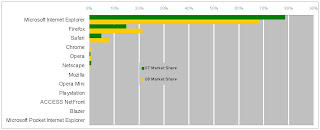If your firm is considering implementing a virtual desktop strategy, be sure to include a review of how data is stored and accessed by your users. Storage is the most overlooked cost of a virtual desktop  strategy and could be the biggest cost delta in moving to a desktop virtualization environment. The cost delta can be mitigated by several factors. For instance, if your user policies currently redirect personal files to a network location, then virtualizing desktops will not add much of a burden. However, if personal files are stored locally, then additional storage needs will be significant.
strategy and could be the biggest cost delta in moving to a desktop virtualization environment. The cost delta can be mitigated by several factors. For instance, if your user policies currently redirect personal files to a network location, then virtualizing desktops will not add much of a burden. However, if personal files are stored locally, then additional storage needs will be significant.
If an investment in additional storage capacity is required, then that will turn out to be just the beginning of the story.
- File types - You probably aren't too concerned about users storing music locally on their desktop, but that will need to be re-examined when those files are using up more expensive SAN space.
- Data Center - The extra storage capacity will need to go somewhere, and it will need power. Is there room in your data center for the storage devices? Is there enough electricity to keep them running? Does your HVAC system have the capacity to handle the additional heat sources?
- Internal Bandwidth - Before the virtual desktop, your users were accessing their massive Excel spreadsheets and Access databases locally. Once that desktop is virtualized, they will be pulling all of that data across your network, from the storage device to the central desktop server farm. This is not biggest hurdle, but it's not trivial by any means.
Please contact Roig Consulting for an objective assessment of these issues before getting too far down the virtualization road. We can help you plan and prepare for all of the implications of your virtualization strategy.






